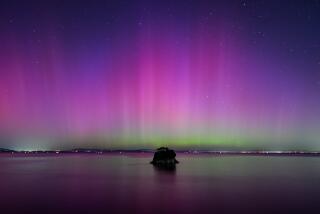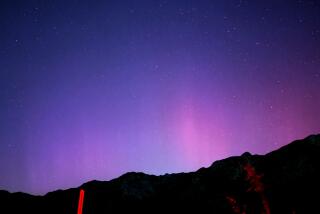NASA releases breathtaking images of the Earth at night
- Share via
It’s not just the stars that twinkle in the dark of night. The Earth is twinkling too.
NASA has released new, spectacular images of our planet at night, from a satellite orbiting 512 miles above the Earth’s surface. The agency stitched some of these images together to create a composite image of the entire planet. They call it the Black Marble.
But the cobweb of city lights that stretch over the planet is just one of the images that the super sensitive light sensor captured. It also sent back images of Auroras over Antarctica, volcanoes and natural gas flares.
Photos: Dazzling images of the earth at night
The sensor, called VIIRS (Visible Infrared Imaging Radiometer Suite), is so sensitive that it can see a single boat light floating in the ocean, or a single street lamp if it was standing alone in a barren desert. It is aboard the Suomi National Polar-orbiting Partnership that was launched in October 2011 by NOAA and NASA.
The images may be dazzling, but there is a lot scientists can learn from the data that the sensor is collecting. For example, researchers can see how city population centers are growing and changing based on the amount of light they send out. Scientists may also be able to more accurately study bioluminescence, the auroras, arctic ice, weather patterns and volcanic eruptions, said Steve Miller, a researcher at a NOAA institute at Colorado State. He added that biologists may be able to use this information to study the effects of city and suburban life on wildlife.
Although NASA has released a few images from the sensor over the last year, the agency calls the latest release of images “unprecedented.”
They certainly take my breath away.
ALSO:
QUIZ: What set the Internet on fire in 2012?
Yet-to-be-born royal baby already subject of Twitter parody
Facebook Demetricator may be a solution to your ‘likes’ addiction
More to Read
Inside the business of entertainment
The Wide Shot brings you news, analysis and insights on everything from streaming wars to production — and what it all means for the future.
You may occasionally receive promotional content from the Los Angeles Times.











